PROMOTING INNOVATION AND R&D
Modernisation is a strategic priority for the Minerals Council as it is an imperative for the mining industry’s growth and ability to contribute positively to society. Beyond its ability to extend the longevity of the industry, 2021 showed that innovation and technology are vital to all industries as they seek to adapt to rapidly altering circumstances.
STRATEGIC PARTNERS
Sieste van der Woude: Senior Executive: Modernisation and Safety
Mandela Mining Precinct
RIIS
CONTEXT
The last year has seen intense focus on innovation and technology; on how it can serve and, in some cases, save humanity. In the face of unprecedented risk, every individual and organisation has been compelled to evaluate traditional ways of living and working. COVID-19 slowed the world, but it accelerated change.
The re-evaluation presented the mining industry with the opportunity to fast track the adoption of modernisation and as a result, innovation and Fourth Industrial Revolution(4IR) technologies have helped the mining industry manage the COVID-19 pandemic more effectively. But the versatility adopted to manage COVID-19 in mining is just the beginning. Modernisation and 4IR is more than a necessity, it will be a key enabler of a global competitive mining industry. This has been acknowledged by President Ramaphosa, who has singled out innovation, science and technology as vital in rebuilding the country’s post-COVID-19 economy.
The report “Ten Insights into 4IR in Mining”, compiled by PwC in partnership with the Minerals Council and with the assistance of the Mandela Mining Precinct, acknowledges that South African mining companies are, by their very nature, innovative, but there is significant room for the industry to more readily embrace 4IR and innovation. The report was compiled with the aim of gaining an understanding of how the mining industry visualises the impact of the 4IR on its people, processes and technologies; how they perceive the evolution of 4IR on their businesses in the years to come; and what steps they are taking to transform their businesses in anticipation of these changes.
Identifying 10 emerging trends, the report noted that CEOs are the primary drivers of digital transformation in mining businesses; that the bulk of mining companies are digital followers rather than innovators or champions; that investment is growing and that the major reasons for investing in 4IR is throughput increase, efficiency increase, lower costs and improved health and safety.
The need to reskill and upskill the workforce is of interest to the sector – nearly 95% of mining leaders believed that there would be a change in the nature of the workforce over the next five years to more skilled employees, as is the finding that organisational culture is keeping up with the times with over 70% of the respondents believing that their leadership had a clear vision for the digital future.
MINING AND MODERNISATION
Modernisation – innovation and 4IR – needs mining. Considering that 28 of the 29 elements used in mobile phones are minded and that of these, 14 of these elements have a recycle rate of less than 1%, mining is essential if we are to continue using mobile phones.
Like modernisation needs mining, South African mining needs modernisation. Over the last decade, multi-factor productivity in South Africa, has fallen by 7.6%. Mining cost inflation was 2% to 3% higher annually than general inflation, leading to two thirds of our output being on the upper half of the global mining cost curve. Mining output declined by 10% and minerals sales contracted by 11%. Modernisation is imperative, not only for the mining industry’s longevity, but for social good. As the world grapples with challenges like climate change and social justice, environmental, social and governance (ESG) issues are become increasingly important in global competitiveness assessments.
South Africa cannot consider modernising its mining industry without ensuring that it brings society with it. Far from limiting the sector’s potential for future employment, modernisation is vital to ongoing industry employment and the upskilling necessary to make South Africa competitive.
The Minerals Council advocates a people-centred approach to modernisation which aims to create new, better paid, safer, healthier, and more fulfilling jobs. This strategy is about turning modernisation into an ally which helps people, rather than replaces them.
Mining is an integral part of how humans and technology, will build a socially just world keeping within its ecological limits. Using technology to enable a more modern mining sector, South African mining will become globally competitive, attract the best talent, and ultimately contribute even more as we re-imagine our economy and society.
Partnering for Progress
Together with our partners, the Mandela Mining Precinct and the Research Institute for Innovation and Sustainability (RIIS), we have dramatically shifted the visibility of innovation in mining in South Africa.
Our strategic partnership with the Mandela Mining Precinct was established to progress the South African Mining Extraction Research, Development and Innovation (SAMERDI) strategy. It is through this partnership that a shared vision of advancing the mining cluster was established. This vision of “shared prosperity through innovation”aims to maximise the returns of South Africa’s mineral wealth for all stakeholders. It also aims to equip mines with the necessary skills and technology for the next generation of modern mining.
Our strategic partnership with RIIS focusses on putting people at the centre of the industry’s modernisation efforts. Progress continues to be made in key areas including Mining Skills 4.0, which aims to identify and map the implications of modernisation on the workforce and furthermore exploring skills transition and preparedness strategies; community development where we are working to strengthen coordination and collaboration in community development initiatives in the Mpumalanga coalfields region; and the Geographic Information System (GIS) Platform where we are looking at leveraging geospatial analysis to provide a real-time evidence base for improved industry decision making.
Pioneering Programmes run by the Mandela Mining Precinct
Advanced Orebody Knowledge (AOK)
The focus of the AOK research programme is to create the ultimate "glass rock" environment, which includes improving geological confidence ahead of the face, reduction or identification of risk associated with geology, and ultimately to have timeous information of what is observed underground to surface. This will contribute to the optimal extraction and zero harm.
Longevity of Current Mines (LoCM)
This research programme places focus on increasing the efficiencies of extraction, improving occupational health and safety, and reducing the costs of current conventional mining operations. A key initiative undertaken under LoCM in 2020 and continuing into 2021, is the underground testing of the Isidingo Drill prototypes, and developing alternative elongate support.
Mechanised mining systems
The aim of this programme is to develop fully mechanised mining systems that will allow for remotely operated extraction of narrow hard rock ore deposits, including non-explosive rock breaking. This programme is expected to launch two innovation challenges modelled on the Isidingo drill challenge in 2021.
Real-Time Information Management Systems (RTIMS)
The programme aims to improve data sourcing, transmission, storage, dissemination, and information management tools, practices, and procedures for mines. The real-time information management systems research programme aims to progressively and incrementally develop a unified real-time information management and controls systems framework proof of concept for South African mining companies by 2022.
Successful application of technologies centred around people (SATCAP)
The SATCAP programme aims to understand how challenges relating to people in the mining modernisation process can be understood from all perspectives. SATCAP research seeks to gain an understanding of how mining stakeholders are affected and impacted by mining modernisation systems, processes and technologies – with an intensive focus on skills needs, jobs impact, and stakeholder inclusion. In 2021, SATCAP will focus on the industry’s 4IR needs.
Pioneering Programmes run by RIIS
Mining Skills 4.0
Mining Skills 4.0 is a multi-year programme aimed at developing a reskilling and upskilling framework and strategy to assist mining companies in achieving a just transition of their workforce into the 4IR.
Mpumalanga coalfields 2030+
Initiated in 2018, the Mpumalanga coalfields 2030 programme aimed to drive innovation in the areas of social performance in the Mpumalanga coalfields region through local economic development, economic diversification and entrepreneurship development. A key enabler and anchor pillar are the strengthening of partnerships to build trust and improve collaboration.
Data 4.0
A need was identified to understand the future needs of the Mpumalanga coalfields regions, within the context of the mining industry, and its mine host communities. This resulted in a GIS being built as a mapping and analysis tool for various socio-economic indicators of the mining communities in the Nkangala region.
However, with the emergence of the COVID-19 global pandemic, the platform was reshaped to model and understand geographically case progression, transmission and exposure risk. and post-lockdown. GIS became a data analysis tool supporting the COVID-19 response, incorporating industry-wide statistics on the virus progression among mining employees across South Africa.
Looking to the future’s mine
Our modernisation programmes encourage industry-wide change and aim to tackle some of the sector’s most concerning issues including improvements in the health and safety of miners, retaining and creating jobs, preventing the premature closure of mines, and providing essential commodities to the world in a way that is globally competitive and socially acceptable. Mining is an integral part of how humans, hand-in-hand with technology, will build a socially just world keeping within its ecological limits. Using innovation to enable a more modern mining sector, our mining can be globally competitive, attract the best talent, and ultimately contribute even more as we re-imagine our economy and society.
RELATED PUBLICATIONS
- Website: Mandela Mining Precint
- Mandela Mining Precinct: Organised Labour Consultative Forum TOR Signing
- Ten Insights into 4IR report
- FAQs: So why is the mining industry modernising?
- People-centred modernisation in mining
- Media Release: Ten insights into 4IR - The state of digital transformation in the South African mining industry: PWC and Minerals Council South Africa report
- RIIS: Reimagining Training in Mining
- Media release: Minerals council supports training innovation in mining
![Logo MCSA [logo]](/templates/chamber/images/logo.svg)

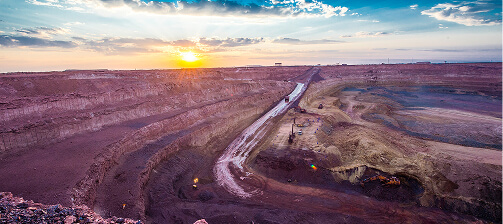
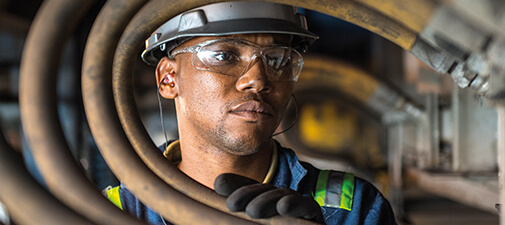
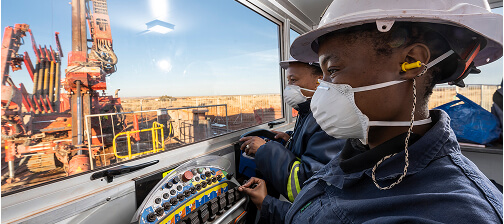
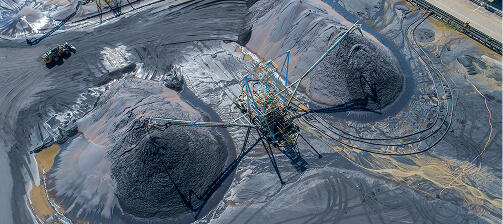
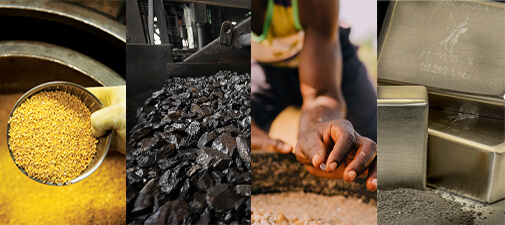
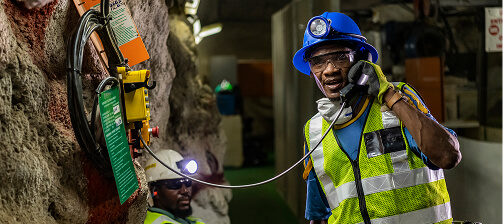
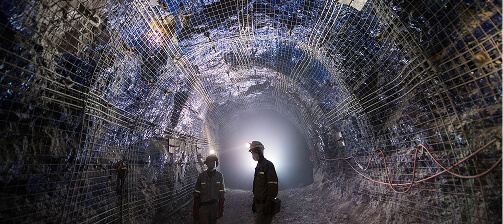
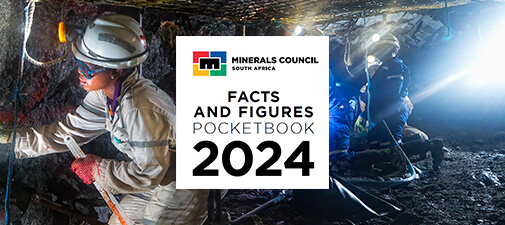
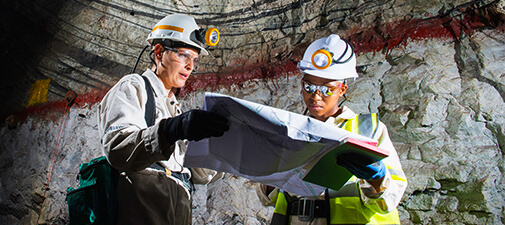
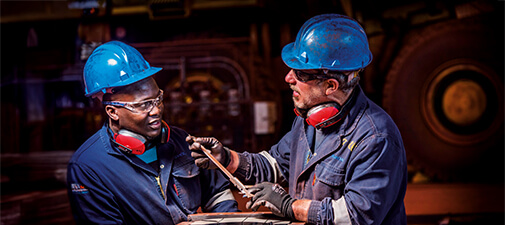

![Mining [photo]](/images/banners/banner-aw-modernisation-640.jpg)